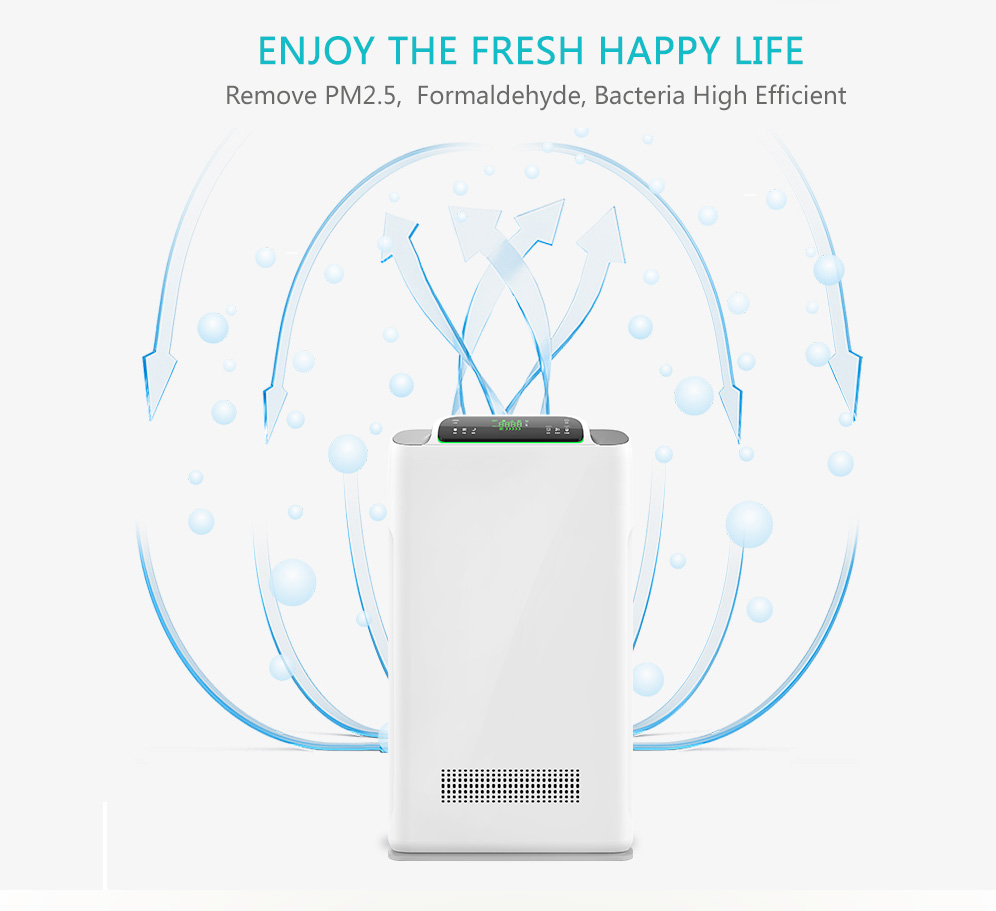Selecting an air purifier requires attention to different technologies and different functions.

At present, there are many air purifier products on the market, and the technologies used are various. Although most purifiers have filter designs, not every purifier with filters is a filter purifier. Consumers, who should choose which technology purifier to achieve the purpose you want? This has to first understand the current mainstream purifier technology!
Filtration type is a relatively common purifier technology. Its working principle is to suck indoor air into the purifier through the air inlet, and absorb the corresponding harmful gases and substances in the air through multiple layers of different functions, and then pass through the air outlet. The indoor air is purified by circulating the purified air. The energy efficiency of this type of purifier is the first condition of the filter.
At present, there are many purifier products using HEPA filters and activated carbon filters, which can kill harmful gases and substances such as tiny particles, formaldehyde, xylene, etc., but the screens are relatively short, generally poor in air quality. In this case, the life of the activated carbon filter will last for about 6-12 months depending on the length of use per day. At that time, the user needs to replace the new filter, otherwise, the purifier will not have the effect.
Electrostatic purifier
Unlike the filter purifier, the electrostatic purifier mainly relies on the high-voltage ionized particles inside the purifier, so that it is adsorbed after being charged. Generally, compared with the filter purifier, the safety factor of the electrostatic purifier is required. The design of the lower and electrostatic type purifier dust collectors is generally sharp, and it is particularly easy to injure during the cleaning process. Therefore, when purchasing such purifiers, you must look for the brand, purchase qualified products, and clean up. Be especially careful!
Negative ion purifier
The negative ion purifier mainly generates negative ions through the negative ion device, so that the negative ions react with harmful substances and harmful gases in the air, thereby purifying the air. Negative ion purifiers will produce unnecessary substances in the process of use – ozone, it is known that a certain concentration of ozone is required in our living environment, but if the ozone concentration is too high, it will seriously endanger our health, so Also pay attention when purchasing such products. It is best to choose a regular brand of products in the formal channel. You can also simply smell it when you buy it. If the machine has a big taste after running, you should pay attention to this. Whether the index of ozone production of products is within a reasonable range.
Need to be especially reminded that if you have a history of allergies or allergies to unknown sources, then it is best not to choose a negative ion purifier, so as not to aggravate allergic symptoms in the process of purifying the air.
Photocatalyst purifier
Photocatalyst-type purifiers do not absorb harmful substances. They use photocatalysts to catalyze harmful substances and gases: they produce catalytic degradation through the action of ultraviolet rays, harmfully degrade harmful toxic substances in the air and kill a variety of bacteria, and also bacteria. The harmful substances in the process are decomposed and harmlessly treated, and have certain deodorization, anti-fouling, and purification capabilities.
Since the photocatalyst purifier must function as an isomorphic UV light, this product must be placed in a position where it can directly touch the light, and it cannot be blocked by anything in any form, otherwise, it will not be purified.
From the above introduction of various purifier technologies, we can probably classify: filter purifiers are the most common, relatively less demanding for placement, but the filter screen needs to be replaced regularly, and the cost is relatively high;
Electrostatic purifiers are basically one-time inputs, but electrostatic precipitators have relatively high relative risk factors and are not suitable for families with children and the elderly to prevent accidents;
Anion-type purifier products will release ozone while purifying harmful substances in the air. When the amount of ozone released exceeds the standard, it will cause harm to the body, and the allergic group should be used with caution;
Photocatalyst purifiers are relatively green and environmentally friendly, but they require high levels of UV light and require long-term exposure to light, so some dark, poorly lit spaces are not suitable for use with such purifiers.
Contact us for more products and discounted prices
Helen:
+86 13922346046
info@olansiglobal.com
https://www.olansiglobal.com
Helen:
+86 13922346046
info@olansiglobal.com
https://www.olansiglobal.com